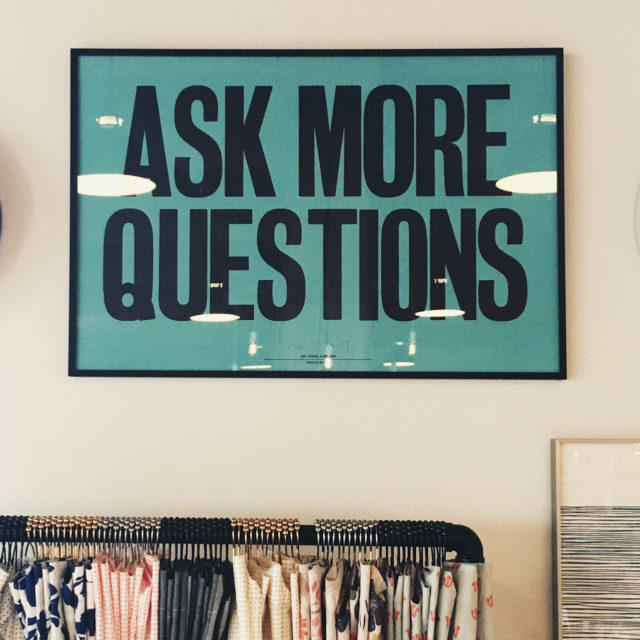Did you know that globally only one in eight employees are actively engaged in the workplace? According to a Gallup poll, that’s only 13% of workers worldwide.
This has led to an increased commitment by businesses the world over to increase employee engagement through retention and morale boosting activities. It also begs the question, “Why the low engagement?”
To answer that question for your business, you’ll want to conduct an employee survey to find out. This is the only way to find out if your employees are satisfied at their job, and if not, what they’d like to see changed.
Now that you’re on board with sending surveys to your workforce, we’re going to look at 10 great questions to ask in an employee survey. First, let’s look at the important things you want to gather.
What You Want to Know
Your basic goal is to find out if your employees are happy and content with their job. You want to know if they are engaged and will continue to be so. And, finally, you want to increase their on-the-job performance and productivity.
To gather this kind of information, it’s a good idea to keep a three things in mind.
First, you want to know if your employees understand and connect with your company’s mission and goals. Just going about their business to get a paycheck doesn’t equate to an engaged employee.
Engaged workers are more productive, so you want to know if your employees are aligned with your company’s goals. (tweet this) Do they believe in your vision?
Bottom line – you want to know if they understand the link between your goals and their goals.
Second, you want to know how they feel about their co-workers. Are they committed to a team atmosphere?
Third, are your employees capable of doing their job, and do they feel they have the necessary competencies?
While your employees may feel like they are part of the team and adhere to your vision, if they don’t believe in themselves or need extra training, they are less likely to be engaged.
Now that you know to keep these things in mind when crafting your survey, let’s look at 10 great questions to ask in an employee survey.
#1: Question About Mission and Goals
Your employees are your best advocates, and to be engaged, they need to believe in your vision. You want to know if they are in it for the paycheck, or if they truly buy in to the products and services you offer.
Questions you might ask include:
- Do you understand the mission and goals of the company? What are they?
- Would you recommend our company’s products or services to a friend? Why or why not?
- What do you think of our customer service?
#2: Question About Team Work
Team work is big in the 21st century. Driven by the Millennial generation and their desire to collaborate, you’ll find that employees thrive in a team atmosphere.
When your employees work together with a healthy team, you’ll also find that each team member will go the extra mile to complete the project.
Tied into team work is your employees’ satisfaction with their peers. This is a good place to find out if they are all getting along and sharing the workload.
You want to know if your employees respect each other and manage conflict well. These questions help you gauge employee morale.
Questions you might ask include:
- Are you a proud member of your team?
- Does your team inspire you to work better and harder?
- Do you think your team helps you get your work done?
#3: Question About Supervisors
A bad boss is the number one reason people quit a job. This is why including a question about your managers and supervisors is a good idea.
You want your managers to be supportive, not oppressive. Ask your employees how they feel and if they have any suggestions.
Questions you might ask include:
- On a scale of 1 to 10, how comfortable do you feel giving feedback to your supervisor?
- What are the strengths of your supervisor?
- What are the weaknesses of your supervisor?
 #4: Question About Appreciation
#4: Question About Appreciation
Engaged employees feel valued and appreciated. Yet, more often than not, employees feel underappreciated in the workplace.
You’ll encourage productivity among your employees if they feel appreciated and recognized for their hard work, so find out if they do.
Questions you might ask include:
- Has your supervisor thanked you for a job well done in the last month?
- On a scale of 1 to 10, how valued do you feel at work?
- Have you received any recognition in the last month?
#5: Question About Growth
Another big reason, especially among the Millennial population, that people leave jobs is because they don’t feel there is an opportunity for growth.
So, ask your employees if they feel stuck.
Questions you might ask include:
- On a scale of 1 to 10, do you feel there are growth opportunities?
- Have you received training on a new skill this year?
#6: Question About Long-Term Goals
To help you plan for the future, you want to understand your employees’ career goals. This can also help you motivate your workforce and provide them with opportunities.
Questions you might ask include:
- What do you want to be doing two years from now?
- Do you see yourself working in the same position in two years?
#7: Question About Accomplishments
Along with growth and long-term goals, this question can help you see into the minds of your employees. Plus, it gives them a chance to toot their own horn.
Questions you might ask include:
- What was your greatest accomplishment this year?
- Was there anything you wanted to achieve but didn’t?
#8: Question About Job Specifics
Employees aren’t always comfortable voicing their concerns, so this can be a helpful question.
Questions you might ask include:
- Which part of your job do you like best?
- Which part of your job do you like least?
#9: Question About Help
Are you creating obstacles for your employees? If you don’t ask, you won’t ever know.
Question you might ask include:
- How can the company help make your job easier?
#10: Question About Morale
Your employees want to enjoy the workplace, so a little fun each week is a good idea. Find out what their idea of fun is.
Questions you might ask include:
- How can we make work more fun?
- Do you like team-building activities?
Final Thoughts
When planning for your employee feedback surveys, you want to think of these surveys as a long-range plan. (tweet this)
We don’t recommend sending just one survey and thinking it will fix all of the problems at your company. One survey should be followed several months later, and then again a few months after that.
This allows you to gauge the change in response. Hopefully with enough time in-between surveys (but not too much), you’ll see some change in the answers.
Lastly, when crafting your survey questions, stick with a mix of closed-ended and open-ended survey questions. Take care not to lead your employees down a particular path, and ensure your questions aren’t biased.
Keep your surveys short and on target. Finally, once you’ve received feedback, be sure to act on it. Let your employees know the feedback you received, and what you’re doing to remedy any issues.
Surveys help you make the best decisions for your business. Are you ready to get started with your free Survey Town trial? Start with your free account today, and you can upgrade at any time.
Image: Jonathan Simcoe and Gilles Lambert





